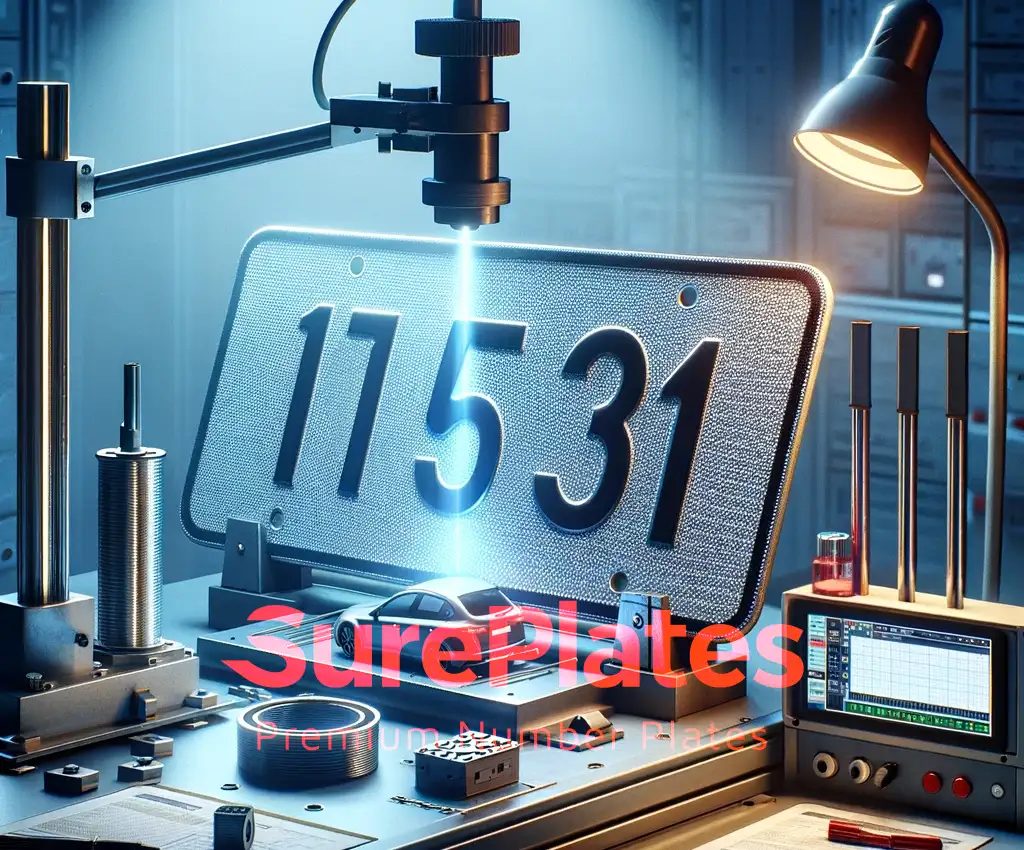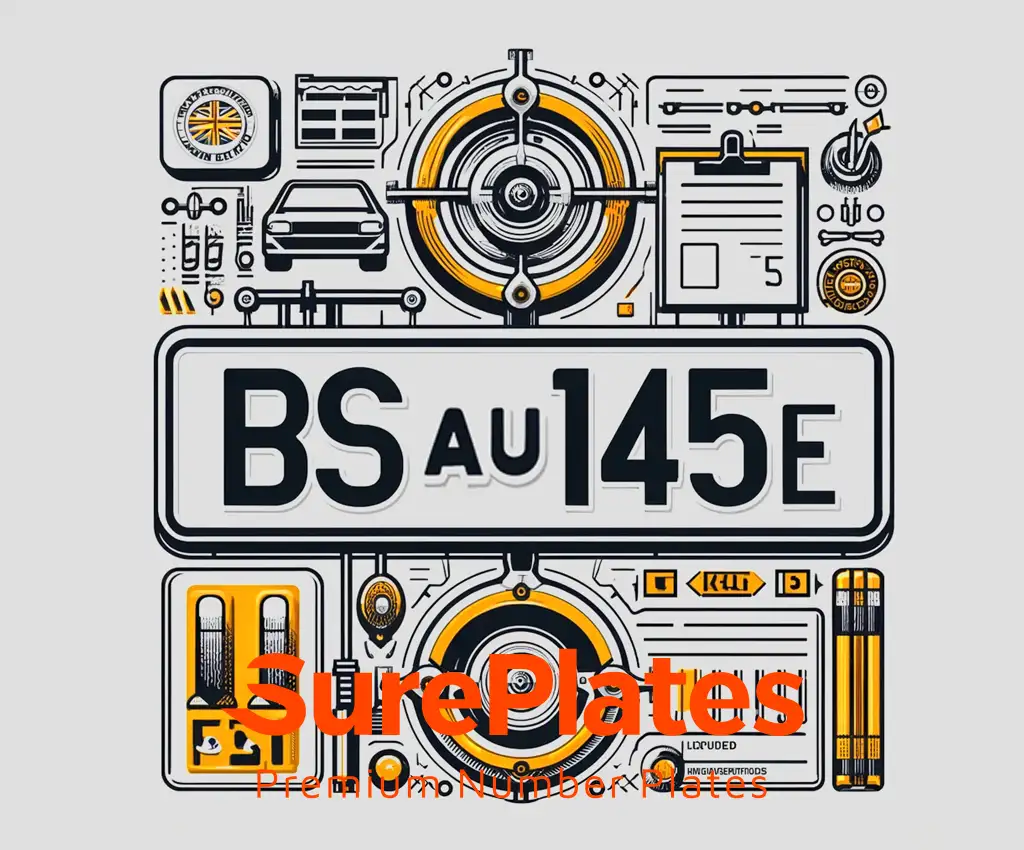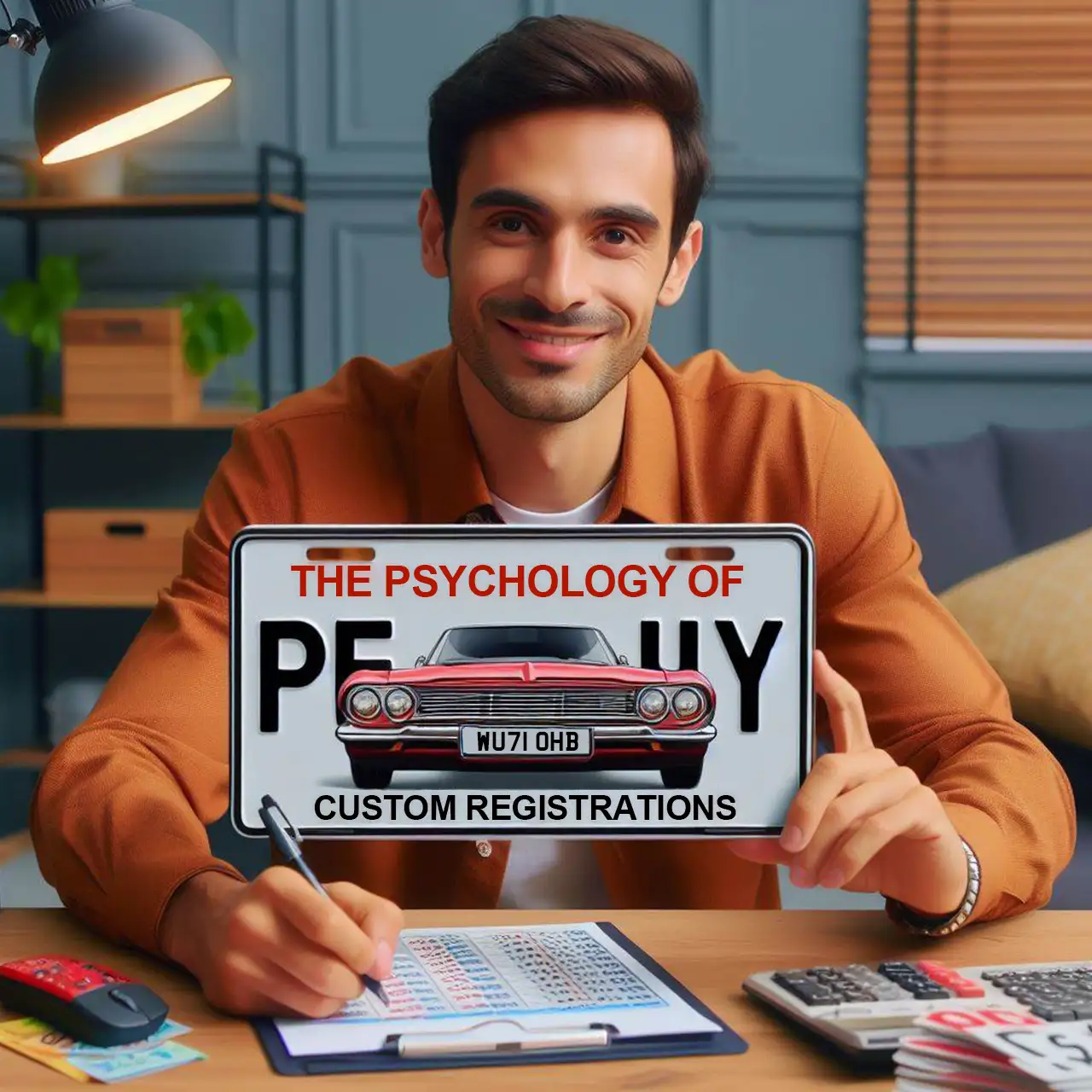Introduction When it comes to vehicle safety and identification, number plate visibility is paramount. In the UK, all vehicle number plates are required by law to be retro-reflective, ensuring that they can be easily read by law enforcement, traffic cameras, and other road users in various lighting conditions. But what exactly makes a number plate retro-reflective, and how does this property contribute to improved visibility on the road? In this article, we’ll explore the science behind number plate reflectivity and its crucial role in maintaining road safety.
Understanding Retro-Reflectivity
Retro-reflectivity is a special type of reflection where light is reflected back towards its source with minimal scattering. This property is essential for number plates, as it ensures that the plates are clearly visible when illuminated by headlights or flash photography, even in low-light conditions.

How Retro-Reflectivity Works
Retro-reflective materials, like those used in UK number plates, are designed to reflect light back to its source using tiny glass beads or prisms embedded in the plate’s surface.
- Light from a source, such as headlights, hits the surface of the number plate.
- The light is refracted by the glass beads or prisms and reflected off the backing material.
- The reflected light is then refracted again by the glass beads or prisms, directing it back towards the light source.
This process ensures that the maximum amount of light is reflected towards the viewer, making the number plate highly visible in various lighting conditions.
Legal Requirements for Number Plate Reflectivity
In the UK, the Road Vehicles (Display of Registration Marks) Regulations 2001 stipulate that all vehicle number plates must be retro-reflective. This legal requirement ensures that number plates meet a minimum standard of visibility, contributing to overall road safety.
British Standard BS AU 145e
All UK number plates must comply with British Standard BS AU 145e, which specifies the requirements for retro-reflective number plates. This standard outlines the following criteria:
- The plate must be made from a retro-reflective material
- The background must be white for front plates and yellow for rear plates
- The characters must be black and meet specific size and font requirements
- The plate must pass a reflectivity test to ensure adequate visibility

By adhering to these legal requirements, UK vehicle owners can ensure that their number plates are clearly visible and contribute to a safer driving environment.
Further Reading
You may also be interested in: Number Plates and Car Cloning: How to Protect Yourself from Fraud
Testing and Certification of Retro-Reflective Number Plates
To ensure that number plates meet the required standards for retro-reflectivity, they must undergo rigorous testing and certification processes.
Photometric Testing
Photometric testing is used to measure the retro-reflective properties of a number plate. This test involves shining a light source at the plate from various angles and measuring the amount of light that is reflected back towards the source. The results of this test determine whether the plate meets the minimum requirements for retro-reflectivity as set out in BS AU 145e.
Weathering and Durability Testing
In addition to photometric testing, number plates must also undergo weathering and durability tests to ensure that they can withstand the rigors of daily use and exposure to the elements. These tests may include:
- UV exposure testing to simulate the effects of sunlight on the plate’s reflectivity
- Temperature cycling to assess the plate’s performance in extreme hot and cold conditions
- Impact and abrasion testing to evaluate the plate’s resistance to physical damage
Plates that pass these tests are certified as meeting the required standards for retro-reflectivity and durability, ensuring that they will perform optimally in real-world conditions.
Maintaining Number Plate Reflectivity
To ensure that your vehicle’s number plates maintain their retro-reflective properties, consider the following tips:
- Clean your number plates regularly to remove dirt and grime that can reduce reflectivity by blocking the reflective backing.
- Replace damaged or heavily worn number plates to ensure optimal visibility and compliance with legal standards.
- When purchasing new number plates, choose a reputable supplier like SurePlates, which offers high-quality, retro-reflective plates that meet all UK legal requirements.
| Do | Don’t |
|---|---|
| Clean your number plates regularly | Use abrasive materials or harsh chemicals for cleaning |
| Replace damaged or worn plates | Ignore signs of fading or reduced reflectivity |
| Choose retro-reflective plates from a reputable supplier | Purchase plates that don’t meet UK legal standards |
By following these guidelines, you can ensure that your number plates maintain optimal reflectivity, contributing to increased visibility and road safety.
Further Reading
You may also be interested in: The Psychology of Personalised Number Plates: Why People Choose Personalised Registrations
Conclusion
In the UK, the science behind number plate reflectivity is not just a matter of visibility; it’s a legal requirement. By understanding the importance of retro-reflectivity, adhering to the standards set forth in the Road Vehicles (Display of Registration Marks) Regulations 2001, and ensuring that number plates are properly tested and certified, vehicle owners can contribute to a safer driving environment for themselves and others. Remember to maintain your number plates regularly and replace them when necessary to ensure optimal performance and compliance with UK law. When it’s time to purchase new plates, consider a trusted supplier like SurePlates, which offers a wide range of road-legal, retro-reflective options, including 3D gel number plates and 4D number plates, to keep you visible and compliant on the road.


